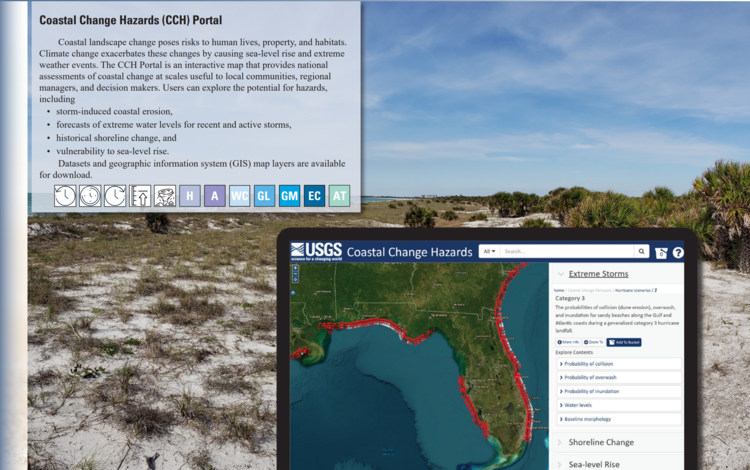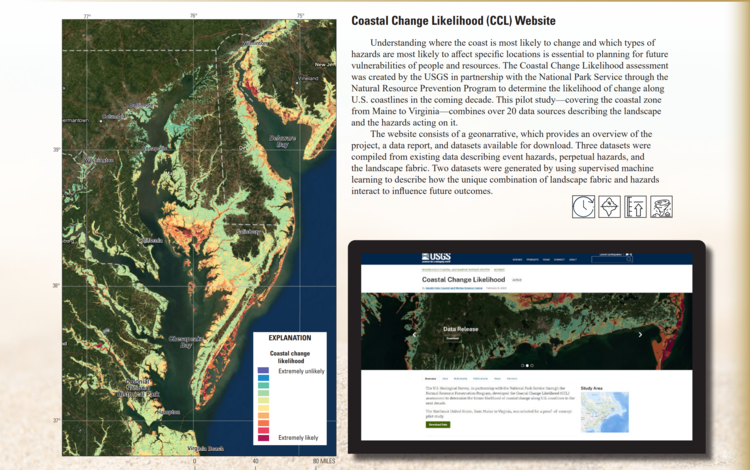The Coastal Science Navigator Companion Guide
An Introduction to the Coastal Science Navigator and a snapshot into USGS coastal change hazard-related products
The Coastal Science Navigator Companion Guide is now available. It highlights 64 USGS coastal change hazards-related products in total.
The Coastal Science Navigator Companion Guide introduces you to USGS coastal change hazards-related products—including interactive data maps, downloadable software, geonarratives, and more.
The Companion Guide highlights 64 products in total, showcasing what the USGS has to offer coastal resource managers, long-term planners, and scientists researching and responding to coastal hazards. While it is not representative of all the information, tools, and data available, we hope it serves as a compelling snapshot of USGS products and encourages you to explore the Coastal Science Navigator to discover more of the products you need.
We created the Companion Guide so we could have a tangible product to distribute at in-person events. As a highly visual booklet, with colorful imagery showing scenic fieldwork sites and coastal change hazards-related product interfaces, it’s a great resource to share with your peers.
What Can You Expect from the Companion Guide?
The Companion Guide is organized by timescale, highlighting products relevant to the present, past, and future. Additional sections are dedicated to downloadable software and geographic scope (where USGS products are applicable). The Companion Guide also provides a table containing all 64 products that match them to their applicable timescale(s) and geographic scopes.



What is the Coastal Science Navigator?
The Coastal Science Navigator is an online gateway to USGS Coastal Hazards products. It was created to ensure partners and other stakeholders can easily locate and identify which may be of use to them.
Using the Navigator
Users can find relevant products using either the Guided Search or Filter Search functions presented on the Navigator’s home page. The Guided Search asks users a short series of questions to lead them to products and tools that may be useful for their specific needs. Users can then explore the applicable products or choose to refine the applied filters to narrow or widen their results. The Filter Search allows users to see all available products and apply filters to narrow the adjacent list to relevant tools and resources. A plain-language summary is available for each product that provides a link to the product itself, a concise product description, a list of special features, contact information, and associated properties such as geographic scope, time scale, coastal hazard themes, and product function, type, and output.
Designed with user-input
The idea for the Coastal Science Navigator was born after synthesizing stakeholder input and learning that coastal resource managers, long-term planners, and federal and state partners are overwhelmed with too many tools and have little time to find and adopt products that may better fit their needs. The Navigator helps address these issues by providing information about available coastal resources in one place and enabling users to curate a list of applicable products and tools.
Get Our News
These items are in the RSS feed format (Really Simple Syndication) based on categories such as topics, locations, and more. You can install and RSS reader browser extension, software, or use a third-party service to receive immediate news updates depending on the feed that you have added. If you click the feed links below, they may look strange because they are simply XML code. An RSS reader can easily read this code and push out a notification to you when something new is posted to our site.




